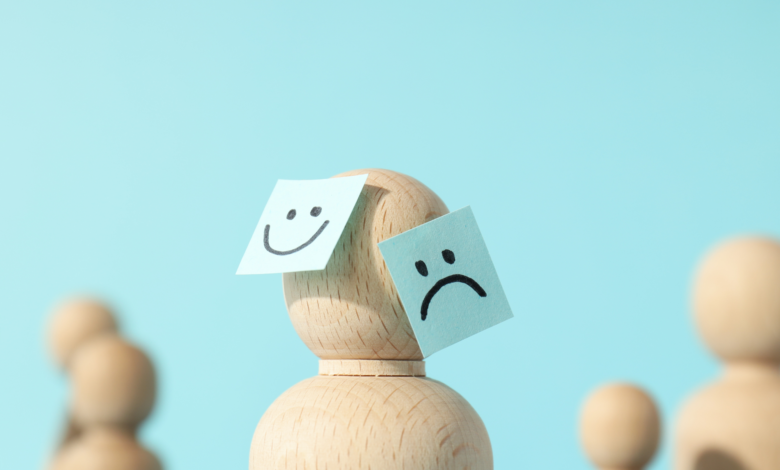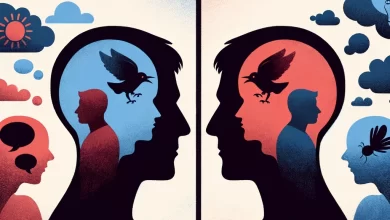Understanding Anxiety Attack Symptoms Explained

Anxiety symptoms are a common emotion that we all experience from time to time. But what happens when anxiety becomes overwhelming, leading to intense anxiety attacks and disrupting our daily lives?
In this article, we will delve into the world of anxiety attacks, exploring their symptoms, causes, and treatment options. Whether you’ve experienced anxiety attacks yourself or want to support a loved one, understanding this phenomenon is essential for a healthier, more balanced life.
What Are Anxiety Attack Symptoms?
Anxiety attacks can manifest differently from person to person, making them challenging to identify and manage. From emotional symptoms like apprehension and irritability to physical manifestations such as a racing heart and muscle tension, anxiety can affect various aspects of our well-being.
What Are Panic Attack Symptoms?
Have you ever experienced sudden and intense panic, with symptoms like trembling, chest pain, and a fear of losing control? These are signs of panic attacks, alarming episodes that can leave individuals feeling overwhelmed and frightened. Understanding panic attack symptoms is crucial for dealing with these terrifying experiences.
Anxiety Attack vs Panic Attack: Understanding the Difference
Are anxiety attacks and panic attacks the same thing? Not quite. While both share similarities in terms of fear and discomfort, they differ in intensity and triggers. Differentiating between the two is key to developing effective coping strategies that work for you.
Types of Anxiety Disorders
Anxiety disorders come in different forms, each with its own set of symptoms and triggers. From generalized anxiety disorder (GAD) to panic disorder, obsessive-compulsive disorder (OCD), social anxiety disorder, and post-traumatic stress disorder (PTSD), understanding these conditions can help us navigate the complexities of anxiety.
Causes of Anxiety
The causes of anxiety are multifaceted, combining genetic factors, traumatic events, learned behavior, and ongoing stressors. By examining these causes, we can gain insight into the root of our anxiety and develop strategies to manage it effectively.
Seeking Help and Treatment Options
If anxiety attacks or panic symptoms persist and interfere with daily life, seeking professional help is essential. Exploring treatment options such as cognitive-behavioral therapy (CBT), medications, and support groups can provide the necessary tools for managing these conditions effectively.
What Are Panic Attacks and How to Deal With Them?
Panic attacks can be frightening and overwhelming, but with the right strategies, individuals can learn to cope with these intense episodes. Understanding what panic attacks are and discovering effective ways to deal with them can empower individuals to take control of their mental well-being.
Panic Attacks vs Anxiety Attacks: Understanding the Similarities and Differences
Is there a difference between panic attacks and anxiety attacks? We explore the similarities and differences between these two experiences, shedding light on how they can manifest and providing insight into suitable coping mechanisms for each.
When to Seek Professional Help for Panic Attacks and Anxiety
If anxiety or panic attacks are significantly impacting your life, it may be time to seek professional help. Knowing when to reach out to healthcare providers or mental health professionals can lead to an accurate diagnosis and the appropriate treatment for your specific needs.
Tips for Managing Stress and Anxiety
Managing stress and anxiety is crucial for maintaining overall well-being. From recognizing personal triggers to adopting healthy lifestyle habits and seeking social support, we’ll explore effective strategies for navigating the challenges of stress and anxiety.
Conclusion
Anxiety and panic attacks can be overwhelming, but they are not insurmountable. By understanding their symptoms, causes, and treatment options, individuals can regain control and live a more fulfilling life. Seeking help is the first step on the path to managing anxiety and overcoming its limitations.
Key Takeaways:
- Anxiety attacks and panic attacks can manifest with a range of symptoms, both emotional and physical.
- Distinguishing between anxiety and panic attacks can help individuals develop appropriate coping strategies.
- Anxiety can be caused by a combination of genetic factors, traumatic events, learned behavior, and ongoing stressors.
- Seeking professional help and exploring treatment options are crucial for managing anxiety and panic attacks effectively.
- Building stress management techniques and seeking social support are vital for managing anxiety and panic symptoms.
What Are Anxiety Attack Symptoms?
Anxiety attack symptoms can vary from person to person. These symptoms encompass both emotional and physical manifestations that contribute to the distress experienced during an anxiety attack.
Emotional symptoms commonly associated with anxiety attacks include:
- Feelings of apprehension
- Trouble concentrating
- Irritability
- Feeling tense or jumpy
Physical symptoms experienced during an anxiety attack are:
- A pounding heart
- Sweating
- Headaches
- Stomach upset
- Dizziness
- Muscle tension
- Insomnia
It is important to note that individuals with anxiety may mistake these symptoms for a medical illness, further exacerbating their anxiety levels.
What Are Panic Attack Symptoms?
Panic attacks are episodes of intense panic or fear that occur suddenly and without warning. These attacks can be extremely distressing and disruptive to daily life. People experiencing panic attacks often describe feeling overwhelmed by a surge of panic that can lead to physical and emotional symptoms.
Common Panic Attack Symptoms:
- Rapid heart rate: A pounding heart or heart palpitations are common during a panic attack.
- Trouble breathing: Many individuals feel a sense of breathlessness, hyperventilation, or a choking sensation.
- Chest pain or discomfort: Some people may experience chest pain or tightness during a panic attack, which can be mistaken for a heart attack.
- Trembling or shaking: Uncontrollable trembling or shaking of the hands or other parts of the body can occur.
- Feeling dizzy or lightheaded: Some individuals may experience dizziness or a sensation of being unsteady on their feet.
- Hot or cold flashes: Sweating, flushing, or feeling chills are common physical sensations during a panic attack.
- Fear of losing control or going crazy: Many people with panic attacks experience a profound fear of losing control, going crazy, or even dying.
Panic attacks typically peak within 10 minutes but may feel like an eternity to the person experiencing them. The intense fear and discomfort can be overwhelming, leaving individuals fatigued and emotionally drained afterward.
“During a panic attack, I felt like the world was closing in on me. My heart was pounding, I couldn’t catch my breath, and I had this overwhelming sense of impending doom. It was a terrifying experience.” – Sarah, panic attack survivor
It’s important to note that panic attacks can occur in various situations and may not always have an identifiable trigger. The sudden onset and intensity of panic attack symptoms can make individuals feel helpless and afraid of experiencing another attack.
Anxiety Attack vs Panic Attack: Understanding the Difference
While anxiety attacks and panic attacks may share some similarities, understanding their differences is crucial in identifying and managing these episodes effectively.
Anxiety attack symptoms, often triggered by specific worries or stressors, are generally less intense than panic attack symptoms. Anxiety attacks are typically a response to a specific situation or thought and can include physical sensations such as a racing heart, sweating, and trembling. The emotional symptoms of anxiety attacks may manifest as feelings of apprehension, irritability, and difficulty concentrating.
On the other hand, panic attacks can occur unpredictably and involve intense physical and emotional symptoms. The onset of a panic attack is sudden and overwhelming, peaking within a short period of time, usually around 10 minutes. Symptoms may include a surge of panic, a fear of losing control or going crazy, chest pain, trouble breathing, and trembling.
Panic attacks are intense episodes of fear or terror that typically last for a short period.
Here is a breakdown of the key differences between anxiety attacks and panic attacks:
| Aspect | Anxiety Attacks | Panic Attacks |
|---|---|---|
| Onset | Triggered by specific worries or stressors | Can occur unexpectedly |
| Intensity | Generally less intense | Intense and overwhelming |
| Duration | May last longer | Peaks within a short period (around 10 minutes) |
| Symptoms | Physical and emotional symptoms | Severe physical and emotional symptoms |
Recognizing the differences between anxiety attacks and panic attacks can help individuals in seeking appropriate help and implementing effective coping strategies. If you are experiencing symptoms of either an anxiety attack or a panic attack, it is important to consult with a healthcare provider or mental health professional for a proper diagnosis and personalized treatment plan.
Types of Anxiety Disorders
Anxiety disorders encompass a range of conditions, each with its own specific symptoms and triggers. These disorders are characterized by excessive and irrational fear or worry that can significantly impact a person’s daily life. Understanding the different types of anxiety disorders can help individuals and their loved ones recognize and seek appropriate treatment.
1. Generalized Anxiety Disorder (GAD)
Generalized Anxiety Disorder is a chronic condition characterized by persistent and excessive worry about various aspects of life, including work, relationships, health, and everyday situations. Individuals with GAD often experience restlessness, irritability, difficulty concentrating, muscle tension, and sleep disturbances.
2. Panic Disorder
Panic Disorder is characterized by recurrent panic attacks, which are intense episodes of fear or terror that can occur unexpectedly. These attacks are often accompanied by physical symptoms such as heart palpitations, chest pain, shortness of breath, dizziness, and a fear of losing control or dying. Panic disorder can significantly impact a person’s quality of life and may lead to avoidance of certain situations or places.
3. Obsessive-Compulsive Disorder (OCD)
Obsessive-Compulsive Disorder is characterized by intrusive, unwanted thoughts (obsessions) and repetitive behaviors or mental rituals (compulsions) that individuals feel driven to perform. Common obsessions may include fears of contamination, doubts, or disturbing thoughts, while compulsions often involve repetitive actions such as excessive hand washing, checking, or counting.
4. Social Anxiety Disorder
Social Anxiety Disorder, also known as social phobia, is characterized by intense fear and self-consciousness in social situations. Individuals with this disorder may fear judgment or embarrassment and may avoid social events or interactions. Physical symptoms may include blushing, sweating, trembling, or difficulty speaking.
5. Post-Traumatic Stress Disorder (PTSD)
Post-Traumatic Stress Disorder can develop after experiencing or witnessing a traumatic event. Symptoms may include intrusive memories, nightmares, flashbacks, avoidance of reminders of the trauma, negative changes in thoughts and mood, and heightened anxiety or emotional arousal. PTSD can significantly impact a person’s daily functioning and quality of life.
“I’ve struggled with social anxiety disorder for years, but with therapy and support, I’ve learned to manage my symptoms and regain control over my life.” – Anonymous
Awareness and understanding of these different types of anxiety disorders are crucial for early detection and treatment. If you or someone you know is experiencing symptoms of an anxiety disorder, it is important to seek professional help. A healthcare provider or mental health professional can provide an accurate diagnosis and recommend the most appropriate treatment options.
| Anxiety Disorder | Key Symptoms | Treatment Options |
|---|---|---|
| Generalized Anxiety Disorder (GAD) | Excessive worry, restlessness, irritability, muscle tension | Cognitive-behavioral therapy (CBT), medications, relaxation techniques |
| Panic Disorder | Recurrent panic attacks, chest pain, shortness of breath, fear of losing control | Cognitive-behavioral therapy (CBT), medications, breathing exercises |
| Obsessive-Compulsive Disorder (OCD) | Intrusive thoughts, repetitive behaviors, fear of contamination or harm | Cognitive-behavioral therapy (CBT), exposure and response prevention (ERP), medications |
| Social Anxiety Disorder | Fear of social situations, self-consciousness, blushing, sweating | Cognitive-behavioral therapy (CBT), exposure therapy, group therapy |
| Post-Traumatic Stress Disorder (PTSD) | Intrusive memories, nightmares, avoidance, hypervigilance | Cognitive-behavioral therapy (CBT), eye movement desensitization and reprocessing (EMDR), medications |
Causes of Anxiety
Anxiety is a complex condition that can be influenced by various factors. Understanding the causes of anxiety is essential for effective treatment and management. Here, we explore some of the key factors that contribute to the development of anxiety disorders.
Genetics
Genetic factors play a significant role in anxiety disorders. Research suggests that certain genetic variations can increase the likelihood of developing anxiety. These variations can affect how the brain processes and responds to stress and fear, contributing to the manifestation of anxiety symptoms.
Traumatic Events
“Traumatic events, such as physical or emotional abuse, neglect, or witnessing violence, can have a profound impact on an individual’s mental health. Those who experience trauma are more likely to develop anxiety disorders later in life.”
The experience of a traumatic event can trigger intense fear and anxiety. It can disrupt the brain’s natural stress response and lead to an ongoing state of anxiety. Traumatic events can include accidents, natural disasters, or any event that threatens the individual’s safety or well-being.
Learned Behavior
Learning plays a crucial role in the development of anxiety. Individuals can learn anxiety-provoking behaviors or responses from their environment, such as observing anxious behavior in parents or caregivers. These learned behaviors can contribute to the perpetuation of anxiety and the development of anxiety disorders.
Stressors
Stressful life events or ongoing stress can also contribute to the development of anxiety disorders. Common stressors can include work-related pressure, relationship difficulties, financial problems, or major life changes. When individuals are exposed to high levels of stress for extended periods, it can overwhelm their ability to cope, leading to anxiety symptoms.
It is important to note that while these factors can contribute to the development of anxiety, they do not guarantee the onset of an anxiety disorder. The interplay of these factors can vary from person to person, highlighting the complex nature of anxiety and the need for individualized treatment approaches.
Seeking Help and Treatment Options
If you’re experiencing persistent anxiety symptoms or if your anxiety is interfering with your daily life, seeking help is essential for effective management and treatment. There are various options available that can assist you in overcoming anxiety disorders and panic disorder.
Cognitive Behavioral Therapy (CBT)
Cognitive Behavioral Therapy is a widely recognized and evidence-based treatment for anxiety disorders. In CBT, you work with a trained therapist to identify and change negative thoughts and behaviors that contribute to your anxiety. This therapy helps you develop healthier coping mechanisms and build resilience against anxiety triggers.
Medications
Medications can be prescribed to help manage anxiety disorders and panic attacks, especially when symptoms are severe or debilitating. Commonly prescribed medications for anxiety include selective serotonin reuptake inhibitors (SSRIs) and benzodiazepines. It’s important to consult with a healthcare professional to determine the most appropriate medication and dosage for your specific situation.
Support Groups
Joining a support group can provide a valuable source of emotional support and understanding from individuals who have similar experiences with anxiety disorders. Sharing your thoughts and feelings with others who are going through similar challenges can help reduce feelings of isolation and provide helpful coping strategies.
Lifestyle Changes
In addition to therapy and medication, making certain lifestyle changes can positively impact anxiety symptoms. Engaging in regular exercise, practicing relaxation techniques such as deep breathing and meditation, maintaining a healthy diet, and getting enough sleep are all essential for managing anxiety. reducing stress and promoting overall well-being.
“Seeking help for anxiety can feel overwhelming, but it is a brave and important step towards regaining control over your life.”
Remember, everyone’s journey with anxiety is unique, and what works for one person may not work for another. It’s crucial to collaborate with a healthcare professional who can guide you in finding the most effective treatment plan for you. With the right support and treatment options, anxiety disorders are highly treatable, and you can regain control and lead a fulfilling life.
What Are Panic Attacks and How to Deal With Them?
Panic attacks are intense episodes of fear or terror that typically last for a short period. These attacks can cause a range of distressing symptoms, both physical and psychological. Recognizing the signs of a panic attack is essential in effectively managing the condition.
During a panic attack, individuals may experience panic attack symptoms such as a rapid heart rate, chest pain, shortness of breath, dizziness, trembling, and a sense of impending doom. These symptoms can be overwhelming and may lead to feelings of fear and helplessness.
Fortunately, there are various approaches to deal with panic attacks and reduce their impact on daily life. One of the most effective methods is panic attack treatment, which often includes a combination of therapy, medication, and self-help strategies.
Therapy
Cognitive behavioral therapy (CBT) is commonly used to treat panic attacks. This type of therapy focuses on identifying and changing negative thought patterns and behaviors that contribute to panic attacks. It helps individuals develop effective coping mechanisms and strategies for managing anxiety.
Additionally, panic attack treatment may involve other therapeutic approaches such as exposure therapy or relaxation techniques. These therapies aim to reduce anxiety by gradually exposing individuals to their fears or teaching relaxation methods to calm the mind and body.
Medication
In some cases, doctors may prescribe medications to help manage panic attacks. These medications may include antidepressants, anti-anxiety drugs, or beta-blockers. It is important to work closely with a healthcare professional to determine the most suitable medication and dosage for individual needs.
Self-Help Strategies
In addition to therapy and medication, individuals can utilize self-help strategies to manage panic attacks. These strategies include:
- Learning and practicing deep breathing exercises to help regulate breathing and reduce panic symptoms.
- Engaging in regular physical exercise to improve overall wellbeing and reduce anxiety.
- Implementing stress management techniques such as meditation or yoga to promote relaxation and reduce stress levels.
- Identifying and avoiding triggers that may lead to panic attacks.
By combining therapy, medication, and self-help strategies, individuals can effectively manage panic attacks and reduce their impact on daily life.
| Panic Attack Treatment Options | Benefits |
|---|---|
| Cognitive Behavioral Therapy (CBT) | Identifies negative thought patterns and teaches effective coping strategies |
| Medication | Helps manage symptoms and reduce the frequency of panic attacks |
| Self-Help Strategies | Provides individuals with practical techniques to manage panic attacks on their own |
It is important to remember that treatment for panic attacks may vary from person to person. Consulting with a healthcare professional or mental health specialist is crucial in determining the most appropriate panic attack treatment plan.
Dealing with panic attacks can be challenging, but with the right support and strategies, individuals can regain control over their lives and minimize the impact of panic attacks.
For more information on panic attacks and their treatment, visit the National Institute of Mental Health website.
Panic Attacks vs Anxiety Attacks: Understanding the Similarities and Differences
When it comes to understanding panic attacks and anxiety attacks, it’s important to recognize the similarities and differences between the two. Both types of attacks can be distressing and disruptive, but they have distinct characteristics that set them apart.
Panic attacks and anxiety attacks share a common thread – the experience of physical symptoms associated with fear and discomfort. Symptoms such as a racing heart, shortness of breath, trembling, and a sense of impending doom can occur during both types of attacks.
However, the intensity and onset of these attacks differ significantly. Panic attacks tend to be more intense, sudden, and unpredictable. They can strike out of the blue, often peaking within minutes. In contrast, anxiety attacks are usually triggered by specific worries or stressors. They are typically less severe and may persist for a longer duration.
Understanding these differences is crucial in identifying the appropriate coping strategies for managing panic attacks and anxiety attacks. For individuals experiencing panic attacks, interventions aimed at reducing the intensity and duration of the attack, such as deep breathing exercises or focusing on a reassuring mantra, may be beneficial.
For those dealing with anxiety attacks, addressing the underlying stressors or worries that trigger the attacks can be helpful. Techniques like grounding exercises, in which individuals focus on their immediate environment to alleviate anxiety, may provide relief and promote a sense of calmness.
Understanding the symptoms associated with panic attacks and anxiety attacks is the first step in managing these conditions effectively. By recognizing the differences between the two and employing appropriate coping strategies, individuals can regain control over their anxiety and improve their overall well-being.
| Panic Attacks | Anxiety Attacks |
|---|---|
| Intense and sudden | Triggered by specific worries or stressors |
| Peak within minutes | Can persist for a longer duration |
| Unpredictable | Often linked to specific triggers |
When to Seek Professional Help for Panic Attacks and Anxiety
If panic attacks or anxiety symptoms are causing significant distress or interfering with daily life, it’s crucial to seek professional help. A healthcare provider or mental health professional can provide an accurate diagnosis and recommend appropriate treatments, such as therapy or medication, to manage panic attacks and anxiety.
Recognizing when to seek professional help is essential for individuals experiencing panic attacks or anxiety. These symptoms can be debilitating and can significantly impact overall well-being. Seeking help from a healthcare provider or mental health professional is important to ensure proper diagnosis and treatment.
Here are some signs that indicate it may be time to seek professional help for panic attacks and anxiety:
- Lack of improvement or worsening of symptoms despite self-care efforts
- Frequent and intense panic attacks or episodes of anxiety
- Panic attacks that occur without a trigger or in non-stressful situations
- Difficulty functioning in daily activities due to anxiety symptoms
- Isolation and avoidance of social situations due to anxiety
- Physical health concerns related to anxiety symptoms
When seeking professional help for panic attacks and anxiety, it is important to find a healthcare provider or mental health professional experienced in treating these conditions. They can provide a comprehensive evaluation, diagnose the specific type of anxiety disorder, and create an individualized treatment plan.
Treatment options for panic attacks and anxiety may include:
- Therapy: Cognitive-behavioral therapy (CBT) is one of the most effective forms of therapy for panic attacks and anxiety. This type of therapy helps individuals identify and challenge negative thought patterns and develop healthier coping strategies.
- Medication: In some cases, medication may be prescribed to manage panic attacks and anxiety. Antidepressants, anti-anxiety medications, and beta-blockers are commonly used medications.
- Lifestyle changes: Making certain lifestyle changes, such as practicing stress management techniques, getting regular exercise, maintaining a healthy diet, and ensuring adequate sleep, can also help manage symptoms of panic attacks and anxiety.
Remember, seeking professional help for panic attacks and anxiety is a proactive step towards better mental health. With the right support and treatment, individuals can learn effective coping strategies and regain control over their lives.
| Treatment Options | Description |
|---|---|
| Cognitive-behavioral therapy (CBT) | CBT is a form of therapy that helps individuals identify and challenge negative thought patterns and develop healthier coping strategies. |
| Medication | In some cases, medication may be prescribed to manage panic attacks and anxiety. Antidepressants, anti-anxiety medications, and beta-blockers are commonly used to treat these conditions. |
| Lifestyle changes | Making certain lifestyle changes, such as practicing stress management techniques, getting regular exercise, maintaining a healthy diet, and ensuring adequate sleep, can also help manage symptoms of panic attacks and anxiety. |
Tips for Managing Stress and Anxiety
Stress and anxiety are common experiences in today’s fast-paced world. Fortunately, there are various strategies that individuals can implement to effectively manage and cope with these challenges. By incorporating stress management techniques and anxiety management tips into your daily routine, you can improve your overall well-being and regain a sense of control over your life.
Recognize Signs of Stress
One of the first steps in managing stress and anxiety is to recognize the signs and symptoms. These can vary from person to person but may include feelings of restlessness, irritability, tension headaches, and difficulty concentrating. By becoming aware of these signs, you can take proactive steps to address them and prevent them from escalating.
Identify Personal Triggers
Understanding your personal triggers is essential for managing stress and anxiety. These triggers can be anything from work-related deadlines to certain situations or interactions. By identifying what causes your stress and anxiety, you can develop strategies to either avoid or better cope with these triggers, reducing their negative impact on your well-being.
Maintain a Healthy Lifestyle
A healthy lifestyle plays a crucial role in managing stress and anxiety. Ensure that you are getting enough sleep, eating a balanced diet, and engaging in regular physical exercise. These lifestyle factors can help regulate your mood, improve your resilience to stress, and promote overall mental well-being.
Learn Relaxation Techniques
Relaxation techniques, such as deep breathing exercises, meditation, and mindfulness, can be powerful tools for managing stress and anxiety. These techniques can help calm your mind, reduce muscle tension, and promote a sense of relaxation and inner peace. Incorporating them into your daily routine can provide relief from stress and anxiety.
Try New Activities
Engaging in new activities can help distract your mind from sources of stress and anxiety. Whether it’s pursuing a new hobby, exercising creativity through art or music, or exploring the great outdoors, trying new activities can provide a fresh perspective and serve as a healthy outlet for stress and anxiety.
Seek Social Support
Building a strong support network is crucial for managing stress and anxiety. Reach out to friends and family members who can offer a listening ear, understanding, and emotional support. Additionally, consider joining support groups or seeking professional help if you’re finding it challenging to cope on your own. Remember, you don’t have to face stress and anxiety alone.
Conclusion
Anxiety attack symptoms and panic attack symptoms can be distressing and disruptive, but they are highly treatable. It is important to seek help and support when experiencing these symptoms. By understanding the differences between anxiety and panic attacks, individuals can develop effective management strategies and improve their quality of life.
Seeking help for anxiety and panic attacks is crucial in finding the right treatment and support. With the guidance of healthcare providers and mental health professionals, individuals can regain control over their anxiety and lead fulfilling lives.
Remember, you don’t have to face anxiety and panic attacks alone. Reach out, seek help, and take the first step towards a life free from the constraints of anxiety.







